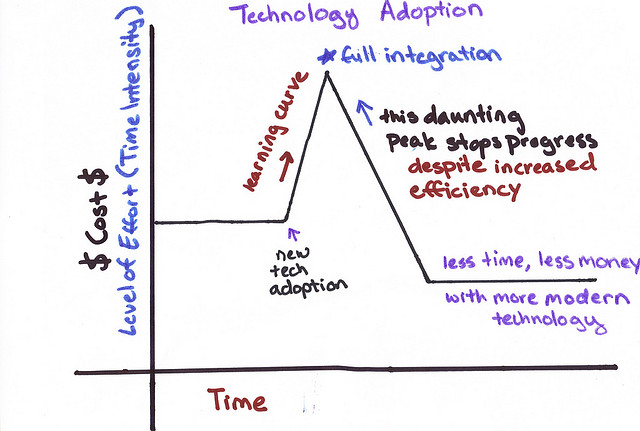How to implement technology successfully in your organisation.

I spent some time in a local school this week talking to some members of staff about implementing educational technology. It made me realise that I haven’t talked nearly enough here about how to do that successfully. It’s simultaneously straightforward and painfully difficult.
Let me explain.
Technically, pretty much anything is possible. Short of thought-transfer and teleporting to the moon we live in a world with endless possibilities on the technical front. Whatever it is you want to do is probably possible.
Sucessfully implementing technology in your organization is therefore not a technology issue. Yes, it’s important to get right. But no, if you just focus on that your technology implementation will not work.
Here’s some advice for those seeking to introduce a new technology into their organisation.
1. Solve other people’s problems
This is the number one priority. If technology isn’t solving someone’s problem somewhere, somehow, then it’s superfluous. My experience is with educational institutions where I’d very much focus on solving teachers’ problems if you want any meaningful traction.
2. Get other people to evangelise for you
If you’re known as technically competent, then any success you have with technology is not necessarily seen as replicable by others. Get influencers on board. Embrace skeptics. Again, solve their problems.
3. Embrace constraints
You will always face constraints. These could be financial. They could be political, social, emotional or hierarchical. Whatever they are, if you can’t change them easily there’s no point whinging: you need to use the difficulty.
There might be a certain technology you’re being forced to use. So use it.
There might be some awkward members of staff or departments. So convert them or avoid them to begin with.
Strategise.
4. Have a strategy
This is blindingly obvious, but if you don’t have a strategy you can’t be strategic about your deployment of technology. “We want to introduce iPads to improve engagement” is not a strategy. It’s a hope. It’s a wish.
Strategies should be user-focused and have appropriate timescales. There’s a lot of talk around technology changing so fast that most strategies are meaningless.
Bull.
When technologies evolve rapidly, then strategies are more important than ever. They’re not perfect but use research such as the yearly (free!) NMC Horizon report to see which way the wind is blowing.
5. Turn on everything / default to open
You don’t know where innovation’s going to happen. In fact, it usually happens at the edges, at the places where you least expect it. That’s certainly been my experience.
So, when you’re deciding which features of a platform to turn on, first look at your strategy. If that doesn’t tell you what to do, turn the feature on. Let the users drive the innovation.
And, finally, default to openness. It’s what makes the world go around. Don’t hide behind e-safety. Don’t hide behind ignorance. Don’t hide behind what you think other people will think. You’ll be pleasantly surprised if you let go of the reins a little. 🙂
Image CC BY Veribatim
